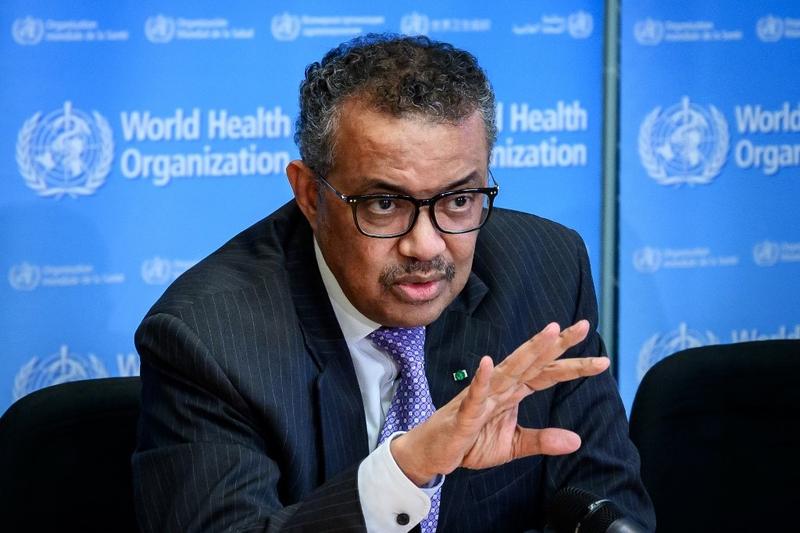 World Health Organization (WHO) Director-General Tedros Adhanom Ghebreyesus gestures as he speaks during a daily press briefing on COVID-19 at the WHO headquarters in Geneva on March 9, 2020. (FABRICE COFFRINI / AFP)
World Health Organization (WHO) Director-General Tedros Adhanom Ghebreyesus gestures as he speaks during a daily press briefing on COVID-19 at the WHO headquarters in Geneva on March 9, 2020. (FABRICE COFFRINI / AFP)
GENEVA - The chief of the World Health Organization (WHO) on Monday said that as COVID-19 has got a foothold in so many countries, the threat of a pandemic has become "very real," but it would be the first pandemic in history that could be controlled.
"It's certainly troubling that so many people and countries have been affected, so quickly," said WHO Director-General Tedros Adhanom Ghebreyesus at a daily briefing, after noting that the reported number of confirmed cases worldwide crossed 100,000 over the weekend and that of affected countries and regions went beyond 100.
The WHO chief underlined that with decisive and early action, the virus can be slowed down and infections prevented, and most of those who are infected will recover
"The bottom line is: we are not at the mercy of this virus," he said.
ALSO READ: French culture minister contracts virus after parliament visit
The WHO chief underlined that with decisive and early action, the virus can be slowed down and infections prevented, and most of those who are infected will recover. He picked China as an example where more than 70 percent of the 80,000 reported cases in the country have recovered and been discharged.
"Looking only at the total number of reported cases and the total number of countries doesn't tell the full story," he said, as 93 percent of all cases reported globally so far are from just four countries.
"This is an uneven epidemic at the global level. Different countries are in different scenarios, requiring a tailored response. It's not about containment or mitigation - which is a false dichotomy. It's about both."
The WHO has provided COVID-19 guidance for countries in four categories: those with no cases, those with sporadic cases, those with clusters, and those with community transmission. For the first three categories, countries must focus on finding, testing, treating and isolating individual cases, and following their contacts.
Meanwhile, for those with community spread where testing every suspected case and tracing their contacts becomes more challenging, the WHO has urged action to prevent transmission at the community level to reduce the epidemic to manageable clusters.
"For all countries, the aim is the same: stop transmission and prevent the spread of the virus," Tedros said.
READ MORE: 1st infection in Mongolia, Ayatollah skips new year speech
WHO statistics show that at the moment, only a handful of countries have signs of sustained community transmission, while most countries still have sporadic cases or defined clusters.
"As long as that's the case, those countries have the opportunity to break the chains of transmission, prevent community transmission and reduce the burden on their health systems," Tedros said.
He added that of the four countries with the most cases, China is bringing its epidemic under control and there is now a decline in new cases being reported from South Korea. "Both these countries demonstrate that it's never too late to turn back the tide on this virus."
He also encouraged Italy to take aggressive measures to contain its epidemic. "The rule of the game is: never give up."


